Patek Philippe’s Calatrava is, I think, the archetypal dress watch.
The first Calatrava reference 96 was released in 1932 – the same year that the Stern family bought their controlling stake in Patek Philippe – a 31mm watch with a minimalist design comprising just hours, minutes, and small-seconds functions on the dial. I refer to it as the archetypal dress watch (as you might refer to the Rolex Submariner as the archetypal dive watch) because the overall design language of the Calatrava hasn’t changed a great deal since 1932, save perhaps for the introduction in 1973 of the Clous de Paris, or so-called ‘hobnail’ bezel, on reference 3520D. This decorative addition went on to become a regular feature of the Calatrava collection over time.
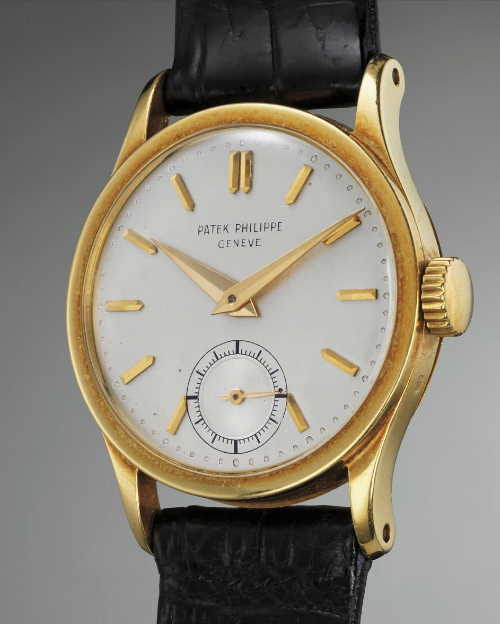
Patek Philippe Calatrava reference 96, photo – www.phillips.com
At Watches & Wonders 2021, there were two new additions to the Calatrava collection in the 6119G and 6119R. At 40mm, these were the biggest size of Calatrava in the collection, perhaps indicative of Patek Philippe looking to evolve the Calatrava such that it might appeal to a wider breadth of clientele in the wake of the Nautilus “hype”.
It’s interesting when reading Jack Forster’s interview with Thierry Stern at Hodinkee from May 2021; I think looking back now, Stern may have been oh-so-subtly hinting to a bit of a forthcoming evolution of the Calatrava:
[When explaining the success of the Nautilus] “You can wear it with jeans, when you go to the pool, or with a beautiful tuxedo. That’s what made it so iconic. You can be anywhere in the world, the watch would suit you. You cannot do that with a minute repeater or a Calatrava. You cannot wear everything with everything.”
and:
“Patek Philippe is not only dedicated to doing traditional Calatrava watches. This is not what my sons expect. There is a new generation…things are always evolving. To stay always traditional? No, I don’t want to die. I have to take the best of the traditional and the future and see if they match to make a beautiful watch.”
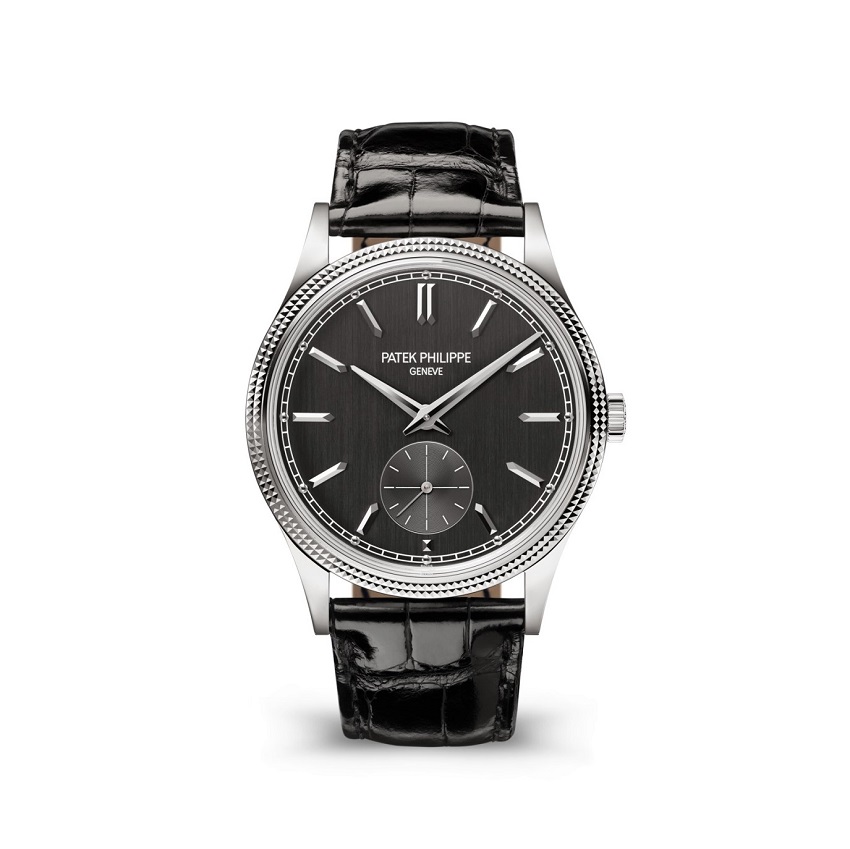
Patek Philippe Calatrava 6119G, photo – Patek Philippe
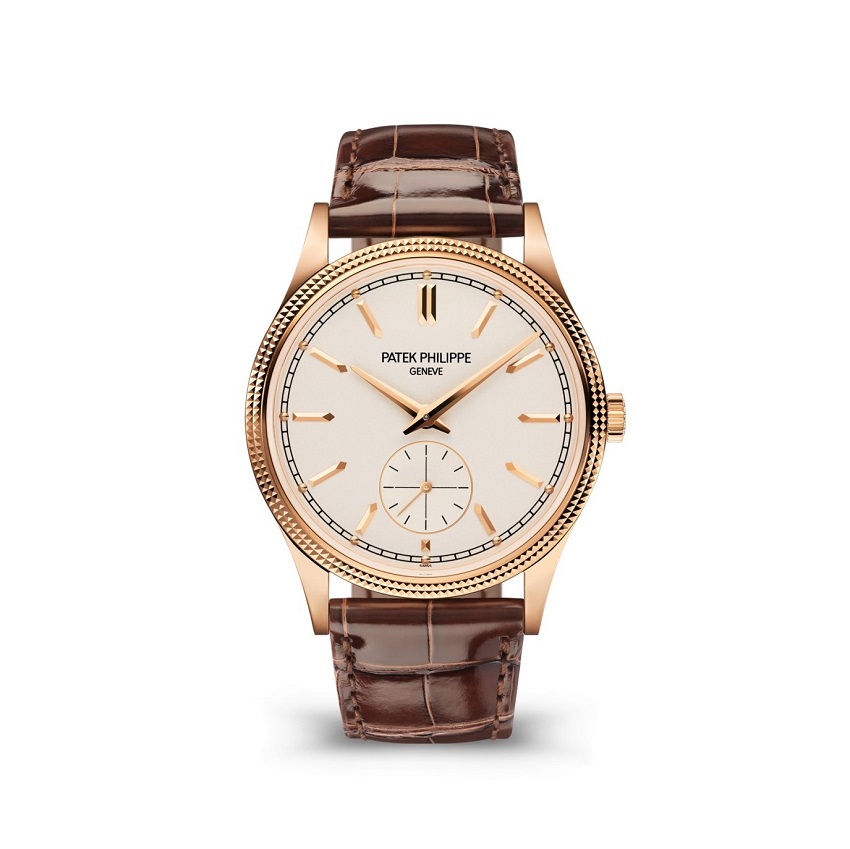
Patek Philippe Calatrava 6119R, photo – Patek Philippe
Whilst the 6119 above is very much in the ilk of the traditional Calatrava design language, save for except the slightly larger case size, the 5226G takes the Calatrava in a new direction – something that can easily be worn with jeans, that could be worn by the pool (albeit not so much in the pool), and something that certainly takes a step away from the “traditional”.
Let’s take a look at what makes the Patek Philippe Calatrava 5226G different.
Patek Philippe Calatrava 5226
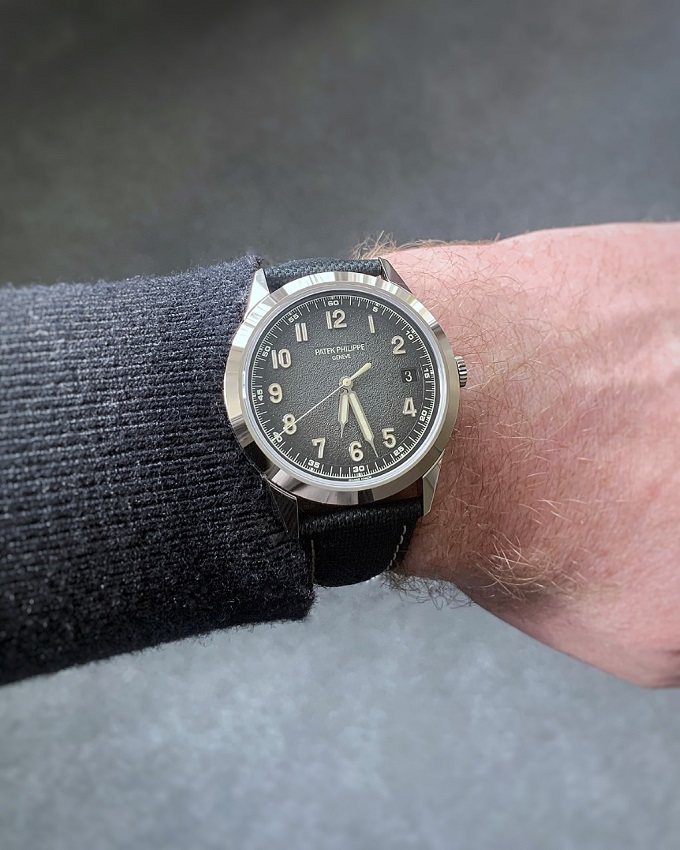
Patek Philippe Calatrava 5226G (black strap)
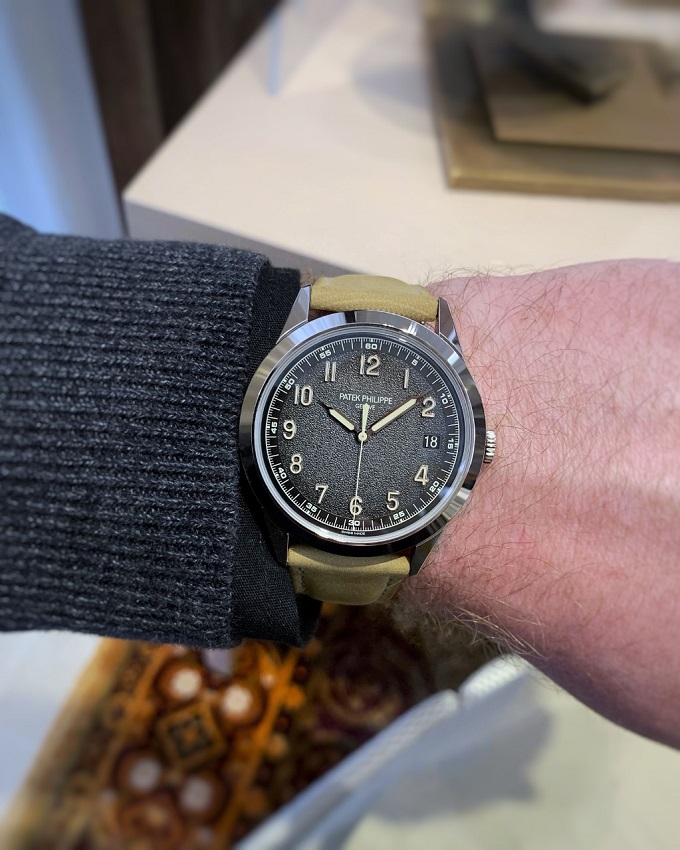
Patek Philippe Calatrava 5226G (tan strap)
Take a look at the 5226G alongside the 6119, and the difference in design language is immediately apparent, a new and contemporary direction entirely.
Whilst the 5226 remains in a round case, it, like the 6119, is a white gold case with a 40mm diameter which retains the step up in size seen with the 6119 and errs towards a larger size than traditionally seen with the Calatrava (albeit rather thin at just 8.53mm thick). The smooth bezel is a step away from the more customary Clous de Paris hobnail bezel (although fear not, it hasn’t been entirely forsaken!)
The dial, however, presents the biggest progression in the Calatrava aesthetic, which steps into the realm of tool watch rather than dress watch, although not fully thanks to its 30m water resistance rating, and resembling something more akin to a field watch thanks to several design features.
Firstly, the 5226G has a textured, almost grained effect charcoal grey, which fades to black around the edges of the dial in an almost fumé dial style. Secondly, around the periphery of the dial is a minute track, with the addition of quarter markers within each minute, and every 5th marker adorned with 5, 10, 15 etc. Instead of the more traditional hour marker batons, the 5226G has Arabic numerals from 1 to 12 (excepting the 3 which is replaced by a colour matched date aperture).
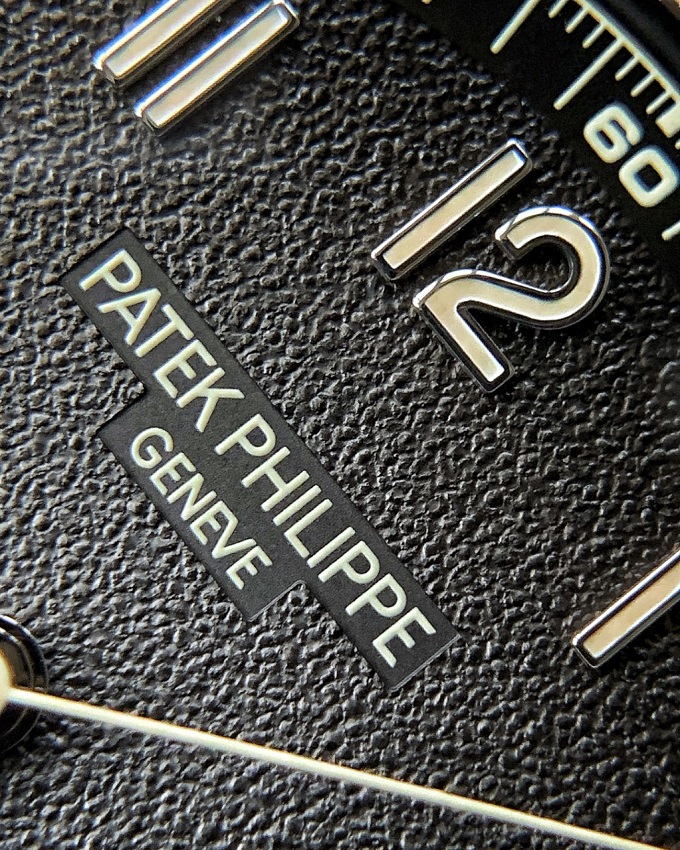
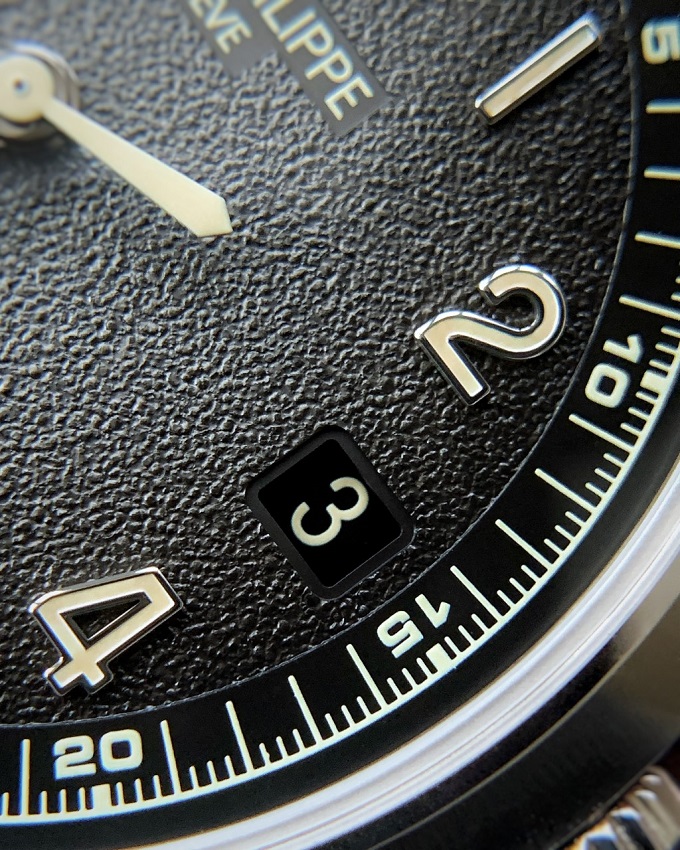
Interestingly, the minute track font is different to that of the Arabic numerals – where the Arabic numerals echo the style used on vintage Patek Philippe watches, the minute track font is decidedly more modern looking – something which I think helps to accentuate the contemporary feel of the 5226G. Finally, one other key feature in a definite step away from tradition, this particular Calatrava uses syringe shaped hands.
The numerals and syringe hands are not only beige coloured (which contrasts nicely against the grained charcoal/black dial to create a vintage feel – something seen increasingly frequently), but also luminescent which is especially unusual for a Calatrava.
Regards the colourway, the choice of beige for numerals or hands is often a trait attributed to so-called faux-patina or fauxtina, where it is used to create an appearance of age, mimicking the colour that luminescent material turns over time.
However, I am not convinced this is what Patek Philippe have done here – I think the applied numerals (and to an extent the hands) are too sharp to create this faux feel, which I often find to be especially obvious, and personally I just don’t get this same feeling from the 5226G. Perhaps this is at least in part due to the various font styles used on the dial, where the use of the contemporary font on the minute track doesn’t lend to an overall “vintage” appearance.
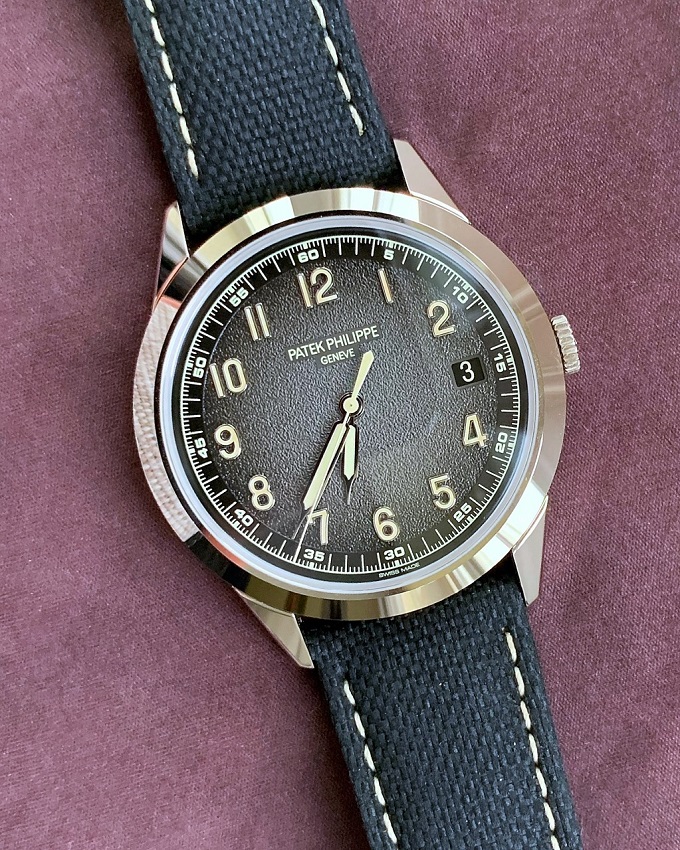
Patek Philippe Calatrava 5226G by day and night
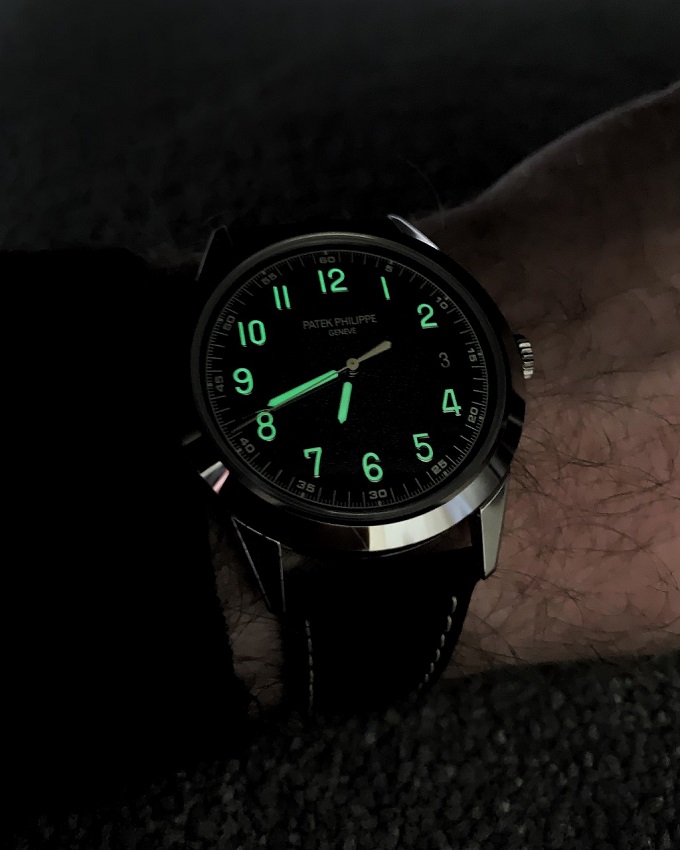
I mentioned earlier that the Clous de Paris, whilst omitted from its usual place on the Calatrava bezel, hasn’t been completely forsaken. In something of what I think is a bit of a masterstroke, Patek Philippe have taken more of a sidestep with, as opposed to s step away from, tradition here in placing the hobnail finishing around the caseband. This adds a real sense of interest to what can otherwise be quite a difficult area of a watch to make especially interesting to look at, especially against the polished case and traditional, sharp, and straight lugs.
What makes the case construction on the 5226G particularly interesting is the fact that Clous de Paris around the caseband is actually unbroken, despite on first glance it looking as though it is physically interrupted by the lugs joining the caseband. In fact, the case is constructed in such a way that there are two parts, where the lugs themselves are fitted to the caseback and although they are incredibly close, if you look closely you can see that the lugs and the caseband don’t actually join.
Over time I imagine this gap is destined to get a bit grubby, as dust and dirt would surely accumulate in gaps like these, but the gap is at least small enough that you wouldn’t immediately notice it unless you knew to look for it.
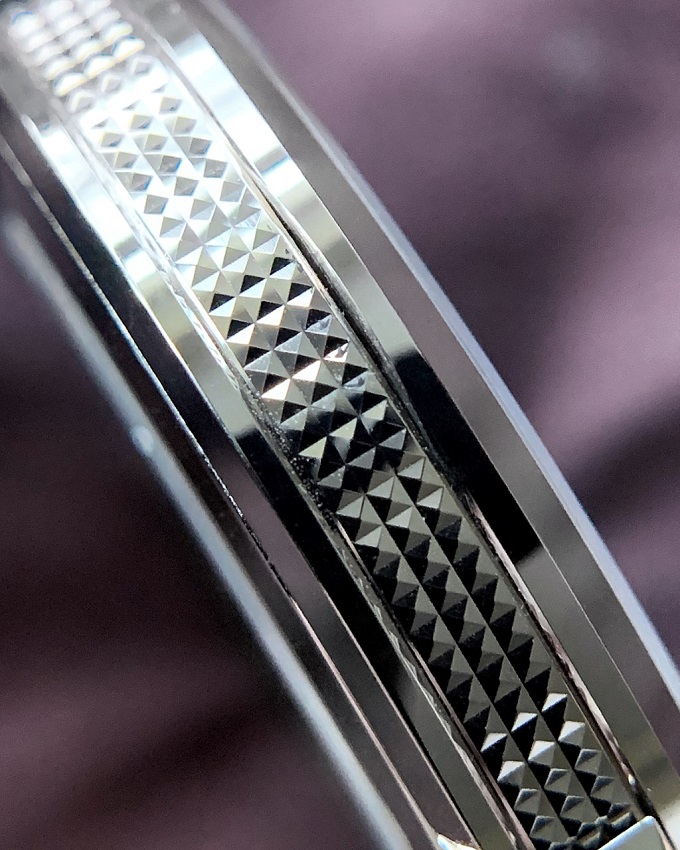
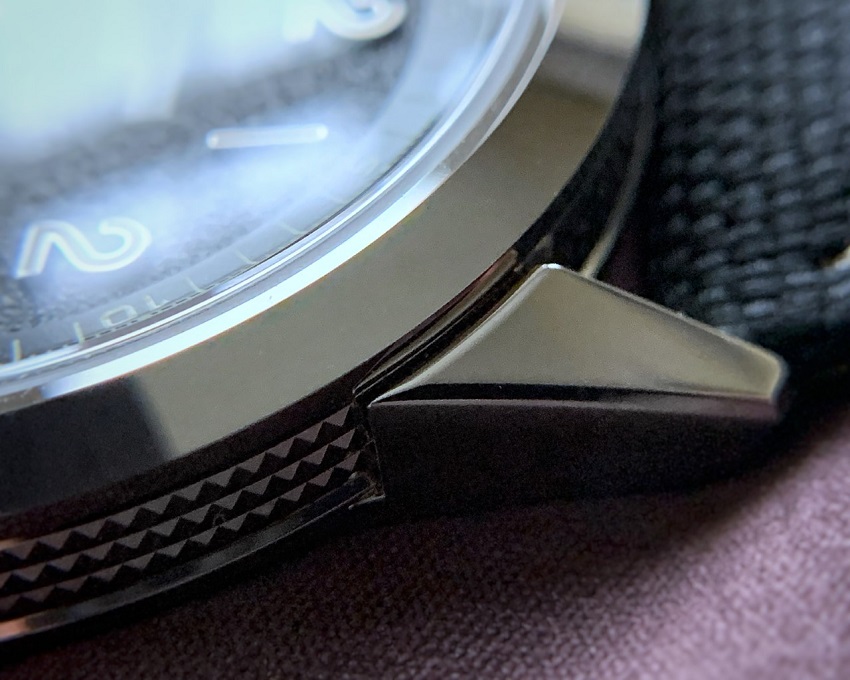
The crown of the 5226G is decorated with the Calatrava cross, Patek Philippe’s famous logo, and I think it looks especially elegant sat directly against the Clous de Paris decoration on the caseband.
On the reverse side of the watch is a sapphire caseback, allowing full view of the automatic 26-330 SC calibre, which offers up to 45 hours power reserve when fully wound. This movement also offers a hacking seconds capability, whereby the seconds hand is stopped when the crown is pulled out to allow for precision time setting.
As you would expect with a Patek Philippe watch, the movement is finished to an exceptionally high standard and is adorned with the Patek Philippe seal hallmark of quality. My favourite detail was the exceptionally fine engraving of the Calatrava cross on the 21ct gold rotor, which is superbly done.
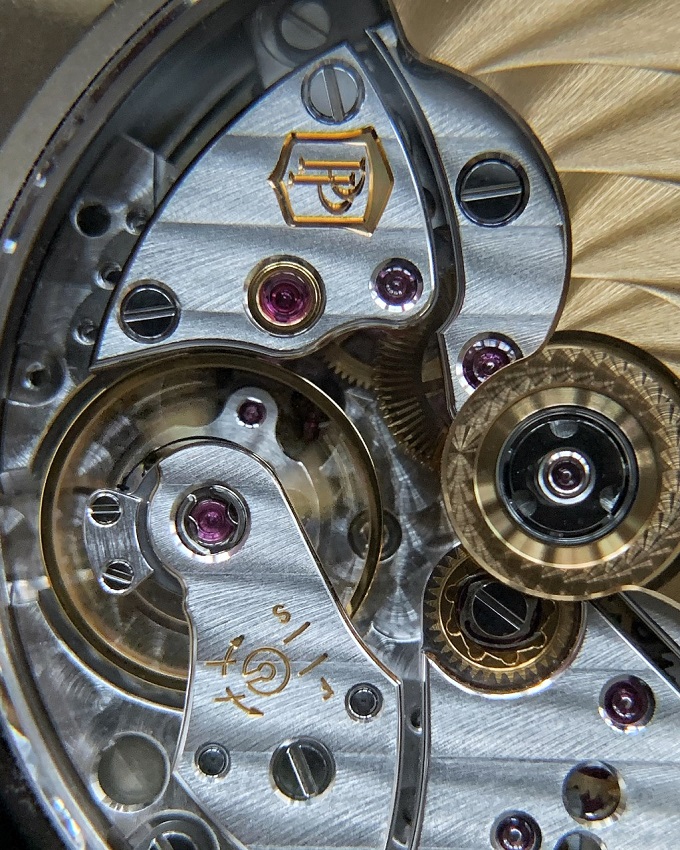
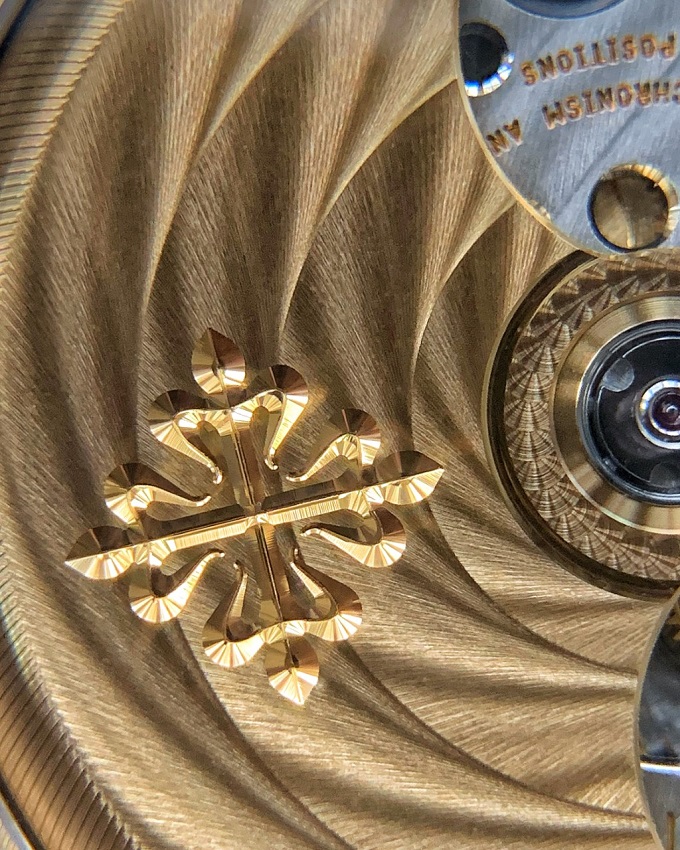
Finally, the watch comes with two strap options, both on quick release spring bars ensuring they are super quick and easy to change over. The calfskin strap options are either a nubuck tan, or fabric finished black with white gold pin buckle – personally I prefer the black, but I think it speaks volumes that Patek Philippe are offering both straps with the 5226G as standard as this will no doubt help this Calatrava appeal to more, and different, clients.
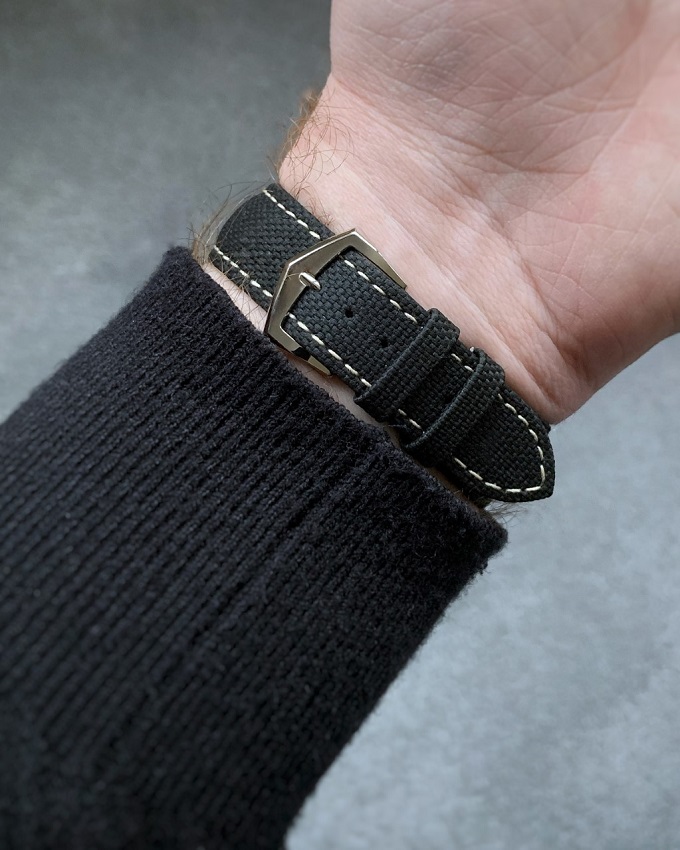
In Summary
The Calatrava 5226G is a stunning watch, and I think the way in which it has been dressed down makes it something that you could probably wear a little more discretely than other Patek Philippe watches, thanks to the almost tool watch aesthetic. Unless someone recognises it as a 5226G, I would suggest it is unlikely to draw as much attention as some other luxury watches might; perhaps this is a reason why the watch is only available in white gold (at least for now), as opposed to rose or yellow gold, given white metals are more discrete.
I think it’s quite exciting to see the moves that Patek Philippe have taken in the past couple of years with the Calatrava collection. Increasing the size with both the 6119 and 5226, and dressing the Calatrava down with the 5226 show an interesting change of direction for this archetypal dress watch family, and shows that Patek Philippe are, to paraphrase the Thierry Stern quote from earlier, actively trying to take the best of the traditional and the future and match them to make a beautiful watch.
The manual wind movement introduced for the 6119 hasn’t yet been introduced in any other watches, so I am curious to see what Watches & Wonders 2023 brings us from Patek Philippe, and whether we might see further contemporary designs entering the Calatrava family to continue growing its appeal.
If you have any questions, please get in touch via our Contact page, or via our Instagram.
You might also be interested in:
- Spotlight: Patek Philippe Calatrava 6119
- Recommended Reading: ‘Patek Philippe – the Authorised Biography’ by Nicholas Foulkes
- What is a Dress Watch?
- Watch Stationery and Gift Ideas
- Watch Books, Watch Boxes and more at the Watch Affinity Shop on Amazon (commissions earned)
As an Amazon Associate, I earn from qualifying purchases – thank you for your support

